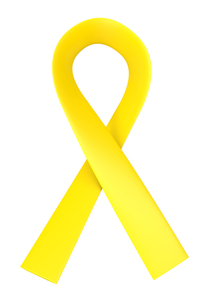How’d you like to bypass years of countless doctor visits, cornucopias of medications with names beginning with every letter from the alphabet, take-one-a-days, with- meals, mixtures, combinations, co-pays, micrograms and tears?
The answer might be simpler than you think:
Just eliminate one or two real assholes from your life!
And the only known side effect you’ll “suffer”: New found, authentic happiness – organically produced by your formerly abused spirit… the one that always seemed ready and willing to absorb total blame and negativity for what was wrong in your life!
Woman, this is a deep, dark secret the big pharmaceutical companies DON’T want you to know: that all too often, the truth about your misery and “depression” can’t be found at the bottom of a pill bottle, but lies on the other side of your bed. The root of your problem? The jerk lying with his manipulative little head on the opposite pillow, snoring like a revved up chainsaw, not some “chemical imbalance” roiling in your brain. And woman, just boot him out of your bed, and you’ll step into your fresh, drug-free future!
Can it really be that easy? Well, yes and no.
Remember how Alice in Lewis Carroll’s classic Alice’s Adventures in Wonderland only had to choose which side of the mushroom to bite to “right size” her enlightenment? We real-world women let ourselves endure strenuous drug trials and errors much more dangerous than Alice’s mushroom. Why? Because in typical womanly fashion, we’re so prone to look in the mirror and accuse the face we see there, rather than look outward and objectively scrutinize the fingerprints of asshole’s thumbs we’re stuck under.
Sister, if I had a dollar for every woman I’ve heard say, “I quit antidepressants cold turkey because I realized they did absolutely nothing for me,” I could buy as many shoes as Imelda Marcos. And needless to say, you’d never see me twice in the same pair of stilettos.
Women, we can only find our salvation by making serious changes in ourselves and our surroundings – starting with understanding how and why we think, feel and react to negative and self-lacerating “triggers,” and then learning to dance with these shadows rather than fear them. We can find true healing in all sorts of crazy ways: places, faiths, interests and communities too large and lively to fit into any capsule. Sometimes even complete solitude can be our alternative to prescriptions.
While suffering my own deepest depression about five years ago, I remember feeling envious of people who claimed antidepressants at least made them feel like zombies. The pills never got me near feeling no pain, and the grass certainly did seem greener on the other side, ‘cause my side of life seemed to be a daily skate on thin ice. At any moment, I dreaded a crack might start in the ice, through which everything in my world would slip, never to be seen again.
But then I took the “great risk”: I removed the asshole from my world. I didn’t go crazy off the pills, I not only regained my sanity and my life, I realized how terribly sad that pill-driven desire was – to feel nothing, to want my days to roll over like fog mist. Now I know every day is too precious, too fragile…too full to waste. Me, I was truly better off letting those medications slip down the trash bag rather than into my blood stream. My life’s still filled with challenges. I still cry. I still worry. But I’m no longer afraid of the “edges” of experience. They’re there, and I’m here. I accept the love and support of people who honestly love, benefit and respect me. Anyone else, I show the door.
I know that for many women the issue of whether or not to take antidepressants is no question at all; it’s necessary to avoid the insistent beckoning call of the edge. Taking a pill never makes you inferior, and you shouldn’t feel ashamed to take one if you have a true, measurable chemical imbalance. But never forget: You’re not the pill; you’re a woman, aware and alive enough to value and cherish the air in your lungs. And that pill might be keeping you from being that inspiration to others you could be.
Many of us stand in the space between poor, suffering lab rats and the Big Pharma company fat cats. We struggle to decipher what extra help we might need to lead vital and healthy lives and whether to cut out the magic bullets that weren’t magical after all. Here is where we indeed have something in common with Alice: Even she had to deal with a conniving Cheshire Cat. Are we willing to consider that some manipulative “cat” has driven us to Dr. Feelgood and the pill bottle?
The old “Serenity Prayer” still applies when it comes to deciding which pills to swallow and which ones to ditch. God grant me the serenity to know when I’m able to remove myself from trying chemical paths to health, even the courage to disregard a doctor’s orders when my gut instinct says, “Hell no!” to still another prescription. And the wisdom to know the vast differences between these very grey areas. Amen.
Oh, and P.S.: God grant me the gumption to toss out every asshole in my life once and for all, even if I don’t toss all the pills out with them, too!





































